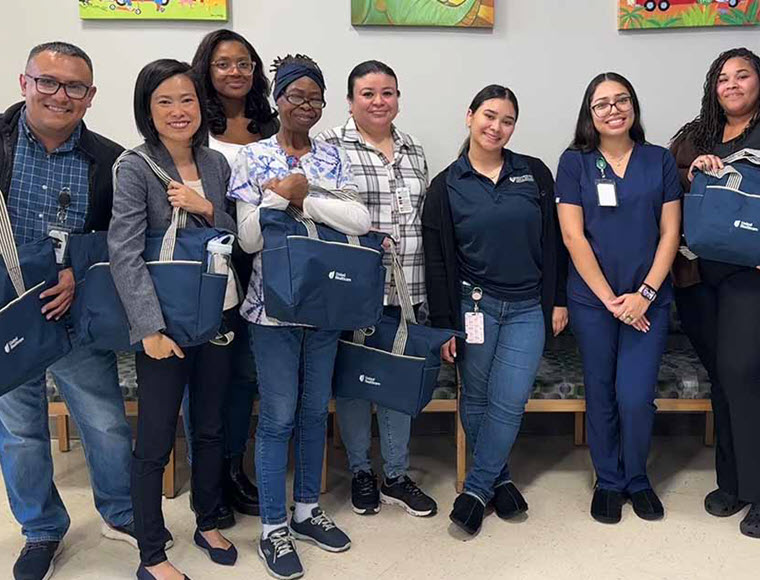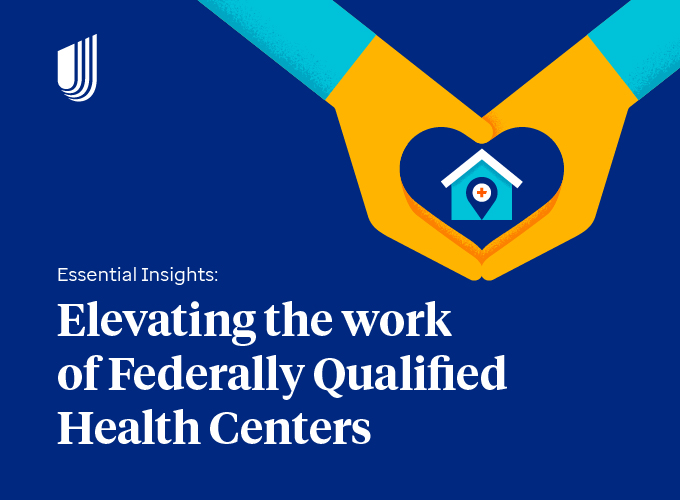The United States is on a trajectory of increasingly adverse maternal health outcomes, which are particularly inequitable for pregnant individuals of color. In fact, although the United States spends more on health care than any other country in the world, more than two pregnant individuals die during childbirth every day, placing the country highest in maternal deaths when compared with 49 other countries in the developed world.
Compared with individuals who are white, individuals who are Black are three times more likely to die from pregnancy-related causes and those who are Native American are more than twice as likely to die from pregnancy-related causes.1 People who are pregnant and living in rural areas also experience worse maternal health outcomes compared with those living in urban areas.
Counties play a key role in supporting the multiple systems that influence maternal health outcomes. County leaders can work closely with health centers, community organizations, and constituents to understand the specific maternal health challenges they are facing and support policy changes and request funding for services to address those challenges.
A commitment to reducing disparities for better maternal outcomes
With approximately half of births in the United States covered by Medicaid, state and county Medicaid programs are acutely impacted by the human and financial implications of these trends. There are key opportunities for Medicaid managed care programs to develop strategies to address prenatal care management and postpartum coverage strategies to improve health outcomes among pregnant individuals on Medicaid.
UnitedHealthcare Community & State is investing in strategies and partnerships to help address the disparities in maternal health outcomes faced by our members. The organization aims to support pregnant individuals and infants to improve their health and well-being.
This effort requires a multifaceted strategic approach and should include partnerships with community-based organizations, Federally Qualified Health Centers, providers, and members themselves.
In the past five years, UnitedHealth Group has invested more than $13.9 million in grant partnerships to support emerging strategies across the country that are focused on improving maternal health.
UnitedHealthcare Community & State is also supporting efforts that:
- Address the disparities that lead to inequities in maternal health outcomes.
- Ensure and support coverage beyond 60 days postpartum.
- Provide access to a comprehensive array of both clinical and non-clinical services and supports, such as midwives and doulas.
- Continue to evolve the care model through enhanced digital modalities, such as telehealth, remote patient monitoring, and addressing other social determinants of health.
The role of UnitedHealthcare Catalyst™ in improving maternal outcomes
The UnitedHealthcare Catalyst™ program uses a partnership-centered approach to build trusting relationships. Through these community-based collaborations, the capabilities and capacities of community partners are leveraged to address community health challenges. These collaborations are measurable, data-driven, and aimed toward advancing health equity.
A problem or area of focus is identified through collective conversation and the use of data. And from there, partners establish an intervention, identify measures, deploy a strategy, and evaluate success.
In Missouri, UnitedHealthcare Community Plan of Missouri, Samuel U. Rodgers Health Center and Northland Health Care Access are working together to reduce disparities and improve maternal health outcomes. "In a recent webinar, I joined Lisa Saul, MD, National Medical Director, Maternal and Child Health, UnitedHealthcare, and Bob Theis, CEO, Samuel U. Rogers Health Center, and other experts to discuss strategies for reducing maternal health disparities and the role county leaders can play in these efforts."
The entities are partnering to address low engagement in pre- and post-natal care and well child visits, social determinants of health (SDOH) barriers including lack of access to transportation and healthy food and improving maternal health outcomes such as preterm births and low birth weights.
As part of Catalyst, the collaborative designed and implemented:
- Multi-cultural outreach campaigns to promote the importance of pre- and post-natal care
- Culturally competent care
- Behavioral health screenings and dental care within pre-natal care plans
- SDOH screenings and support for enrollment into Medicaid, government food programs and other community programs
- Support for baby benefit enrollment and appointment scheduling of post-natal and child well visits
The program resulted in a 30% increase in behavioral health and dental care for obstetric patients, a 3.6% improvement in full-term births and a 90% improvement in members attending post-natal care appointments. UnitedHealthcare Community & State is developing programs around the country to foster stronger, healthier mothers and children.












